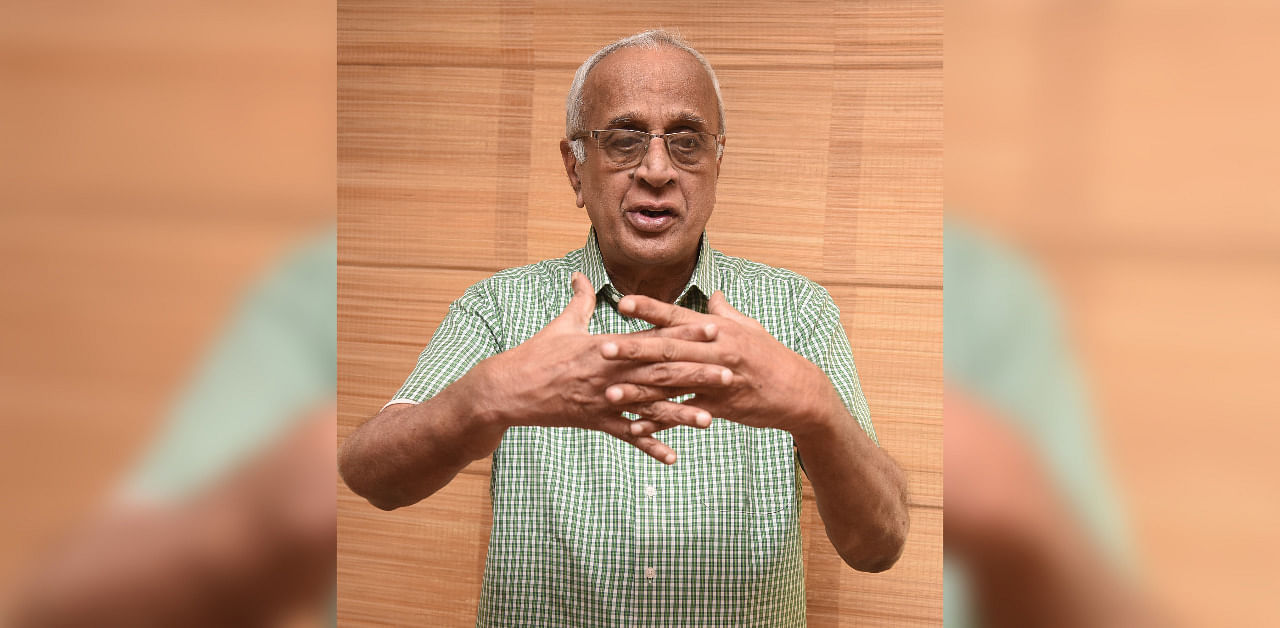
Citizen activism has today emerged as a formidable force in Bengaluru city. But two decades ago, when the trend was in its infancy, one man took the lead to give citizens a pan-city voice that articulated their civic problems with purpose.
Veteran civic activist, N S Mukunda from the Citizens’ Action Forum (CAF), in an interaction with DH, traces the evolution of the movement. Excerpts from the interview.
Q. You have been active in the civic space for over two decades. What was your experience in the initial years?
A. There was absolutely no development to speak of in Padmanabhanagar, the city’s largest ward, where I had my office. We got 42 Residents Welfare Associations (RWAs) under a federation called Abyudaya. It was India’s first such federation.
Our collective campaigns eventually led to big development of the ward. We did a survey, collating data on all the residential and commercial buildings in the ward, asphalted roads, planted trees and undertook tax collection. This survey was used by the Palike for one or two years.
Q. The Citizens’ Action Forum you founded in 2006 was one of the first pan-Bengaluru forums to articulate the civic demands of Bengalureans.
A. Yes, and as part of it, we filed a lot of objections to the Comprehensive Development Plan (CDP-2015). The Thomas Committee compiled 30,000 objections and found merit, but eventually, the government scrapped them.
Raising strong objections to the sham of a public consultation conducted for the Revised Master Plan (RMP-2031), we ensured that the Bangalore Development Authority organised zonal meetings. CAF actively participated in all the meetings.
Q. What was the essence of your objections to the Master Plan?
A. A comprehensive plan for the city needs sectoral plans related to power, water supply, policing and land use. Land use is only a small part of the overall development plan. In all Indian cities, a master plan is now reduced to only a land-use pattern.
Today, agencies such as Bescom and BWSSB find it difficult to even build sewage treatment plants, sub-stations and cemeteries due to poor planning. They need to think through everything that the city needs. Today, funds can be mobilised, but where is the place to build? We wanted BDA to prepare a vision plan for the city as decided by the citizens.
Q. How has citizen activism evolved in Bengaluru city over the last 15-20 years?
A. It has seen remarkable and exponential growth, and Bengaluru is now in the forefront of this change. Citizen participation has been acknowledged as a standard practice. That citizens need to be involved right from the planning stage of a project has now gained currency. No one questions the idea of citizen participation anymore.
The normal grouse of vintage Bengalureans that outsiders don’t take interest in city affairs has been proved wrong. A lot of outsiders have participated in civic movements. So many myths have been destroyed. CAF was an active part of this change. For instance, the forum had gone to the National Green Tribunal (NGT) to get the steel flyover stayed. This played a part besides the widespread protests against the project by citizen groups.
Q. Ward committees and area sabhas are a key part of decentralised governance with active citizen participation. How can a restructured BBMP make the structure stronger?
A. The committee still remains a nominated body, which is an anomaly in a democracy. Let them increase the committee members to 25, with 60% elected and 40% nominated.